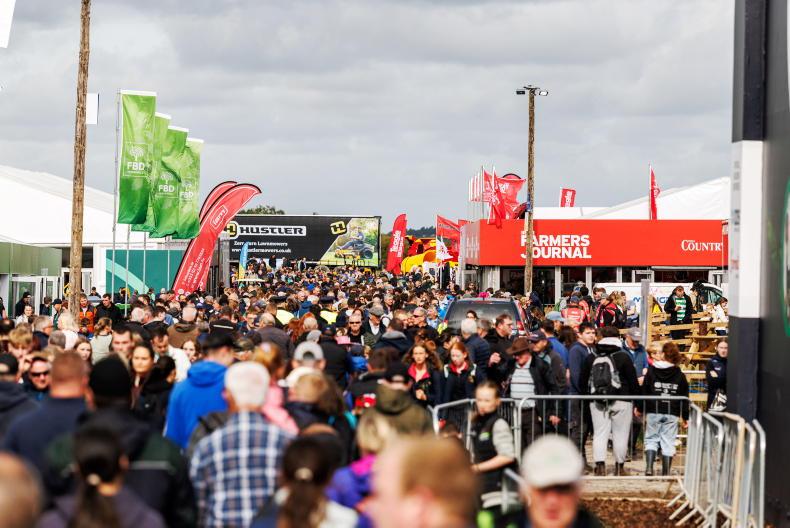When GPS guidance on tractors was first introduced, it was seen as ground-breaking. Allowing a satellite to steer a tractor was seen by many as a huge leap forward in terms of technology and automation. Today, guidance is installed on approximately 20% of all new tractors sold in Ireland. This percentage is higher in other countries including North America and Australia where large implements such as sprayers and planters are used in larger prairie-like fields.
The benefits are numerous with cost savings being the most obvious. The question we must now ask and one farmers are also wondering is, what technology can we expect to see on tractors in another 20 years? Will we even have tractors as we know them today farming the land?
Drones
While the Irish Farmers Journal can’t see into the future, we have seen some ground-breaking machinery and technology in both concept and production phases. Take for instance something that was developed as an unmanned weapon of war – the unmanned aerial vehicle (UAV) or drone. Designed to be used to spy on enemy territory, drones are now widely used in the agricultural sector.

Their functions include crop scanning with compact multi-spectral imaging sensors. This information can be used to treat specific disease in the crop or target specific areas with variable rate fertiliser spreaders. A more common use for drones is for GPS map creation using an on-board camera. In some countries, larger drones have been trialled to carry loads of fertiliser applying it on the “little and often” principle and even here in Ireland they have been used to check on remote cows inaccessible by normal means on a daily basis. The Chinese drone maker, DJI, has launched a new agricultural drone to the market with the ability to spray crops at the rate of 4ha per hour.
Driverless tractors
More down-to-earth but equally as notable are unmanned tractors. Early prototypes from Case IH, New Holland and Kubota rely on a combination of high-accuracy GPS signal and use numerous sensors to detect obstacles including people. When Case IH introduced its cabless concept tractor to the world at the Farm Progress Show in Boone, Iowa, in September 2016 it was seen as another huge step forward in agricultural technology. The tractor was revealed to the world planting in a stubble field, even going off course to drive around a pole and regaining pinpoint accuracy again. Controllable from a tablet with the ability to run 24/7, what was once an idea on a computer screen is very much becoming a reality.
Robotic planters

Closer to home, European machinery companies have also been at the cutting edge of technology development. Fendt, for example, revealed the Fendt Xaver at last November’s Agritechnica in Hannover, Germany. The mini-robot concept is designed to work in a swarm with other similarly sized robots. Each 50kg unit which is powered from a 1hp on-board battery can work for two to three hours before recharging. The size and weight of the Xaver is designed to minimise soil compaction and in initial trials, a swarm of robots was used to precision-plant 2ha/hr of sugarbeet. The technology in these mini-robots is so clever that if one gets stuck or goes “off-grid” the others up their output to compensate.
The Fendt Xaver is a product of a research project known as MARS led by the University of Ulm in Germany. While there have been many similar projects in universities and institutes across the world, what is unique is AGCO/Fendt’s decision to take on the project since 2016. This, coupled with the stated objective of developing a robot swarm system that will compete with the output and price of a tractor mounted seeder, indicates that this system may indeed become commercial in years to come.
Electric tractor

Fendt also used Agritechnica to launch its electric tractor, the e100. According to Fendt, it is the first electrically powered variable-transmission tractor available on the market.
Other companies have launched concepts but according to Fendt the e100 will go into production with limited units available in 2018. The tractor produces 67hp, which lasts for up to five hours under normal operating conditions.
The size and width of the tractor would suggest the German company is targeting vineyards and small farmers first.
It comes with both conventional hydraulic couplers and an electric socket in anticipation of the move towards electrically powered implements.
Indeed, many concepts and ideas have been sold as a solution to a problem in the agricultural world. Unfortunately, these concepts can be sometimes too far-fetched to make it any further than a machinery show. One concept that is on course to go into production as a solution to burning diesel, is the methane-powered tractor from New Holland.

As the name suggests, the tractor burns methane gas instead of diesel which is stored on the tractor in specially designed tanks. We got to drive the tractor recently at New Holland’s headquarters in Basildon, Essex, towing a tandem-axle trailer. Apart from sounding different to the normal diesel-powered variant, the difference in performance was hard to distinguish. According to New Holland, it has taken tried-and-tested technology from methane-powered trucks and adapted it to suit a tractor. The company is targeting farmers who have their own methane supply from their anaerobic digester plant or access to what is considered cheap clean fuel. New Holland is even boldly claiming the tractor will pay for itself in a just a few years with the money saved over using normal tractor diesel where methane is produced on farm.
Smart sprayers

Cutting down on inputs and overheads is always going to appeal to farmers. A company in Australia has developed technology for crop sprayers that can identify weeds using smart sensors. The technology known as Weed Activated Spray Process (WASP) distinguishes between weeds and other background material through the difference in light reflectance. This signal is then used to activate individual nozzles on the sprayer boom to only treat specific weeds or patches of weeds.
Trials claim there are savings of up to 90% on herbicide over conventional systems. The benefits and savings are hard to argue with. Unfortunately, the price of the technology at the moment is out of reach for many farmers who, like farmers all around the world, are relying on the price of their commodity to pay for such investments.















SHARING OPTIONS